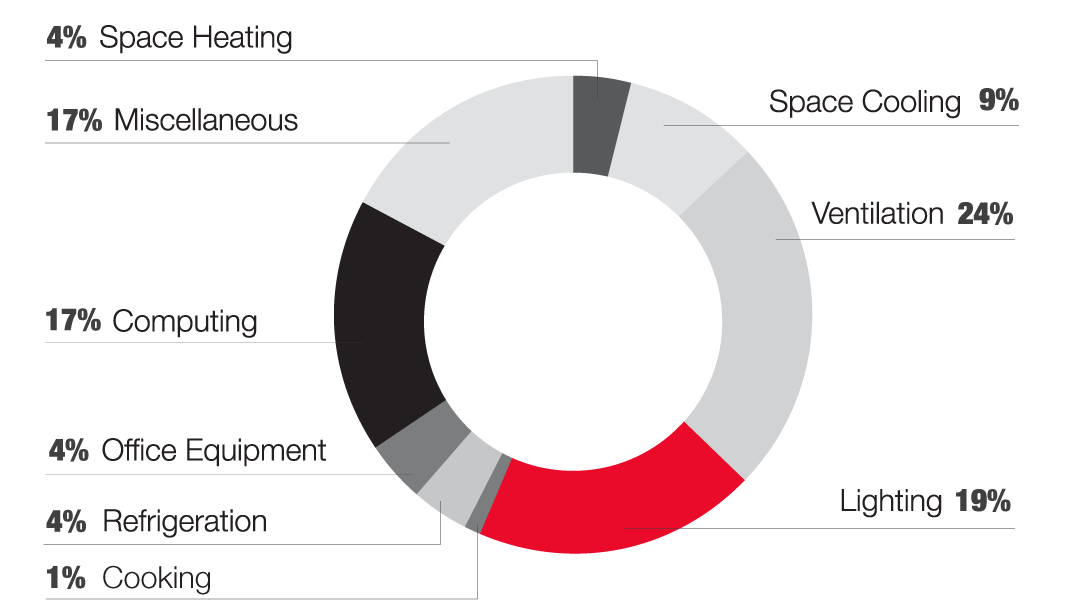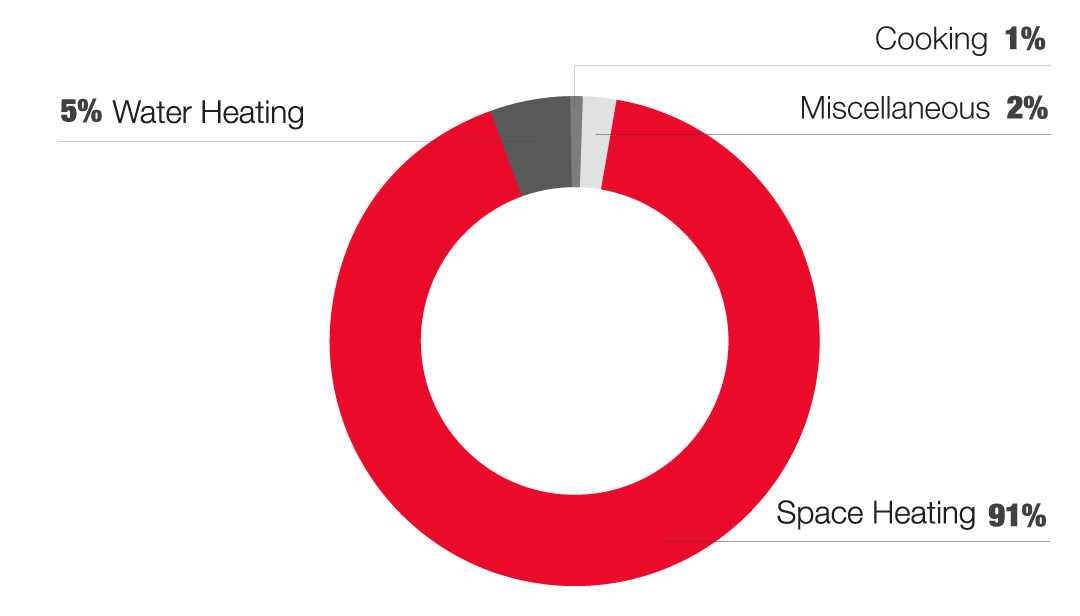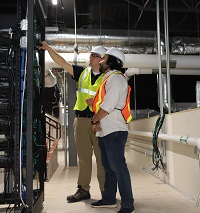Ensure healthy energy savings
Did you know the average outpatient healthcare facility in the Midwest spends nearly $20,000 per year on electricity and natural gas? What could be using so much energy? Ventilation to cycle out germs and space heating to keep the space warm are two of the biggest culprits. Bundling upgrades and saving on improvements is easier than ever with the Small Business Express program, which connects you with qualified contractors and rebates to create lasting energy efficiency savings for your healthcare facility.
What uses the most energy in healthcare facilities
The following pie charts illustrate which outpatient healthcare facility activities use the most energy and cost the most. Space heating, cooling and ventilation account for a large portion. Electricity end uses include (from the top, counterclockwise): 4% space heating, 17% miscellaneous, 17% computing, 4% office equipment, 4% refrigeration, 1% cooking, 19% lighting, 24% ventilation and 9% space cooling. Natural gas end uses include (from the top, counterclockwise): 1% cooking, 5% water heating, 91% space heating and 2% miscellaneous.
Electricity End Uses

Natural Gas End Uses

What's costing healthcare facilities the most
| End Uses | Average Electric Cost/Month | Average Gas Cost/Month | Energy Savings Potential |
|---|---|---|---|
| Space Heating, Cooling and Ventilation | $568 | $94 |
Moderate
|
| Office Equipment and Computing | $322 | - |
Moderate
|
| Lighting | $291 | - |
High
|
| Miscellaneous | $261 | $2 |
Moderate
|
Small Business Express is here to lend a hand
Small Business Express makes it easy for you to get professional guidance to identify energy-saving opportunities. Eligible rebates can help lower your out-of-pocket cost to replace failing equipment, and help save energy and money long term.
Ways to Save

Heating and cooling equipment accounts for a total of $662 a month in energy costs in outpatient healthcare facilities. There are several ways to reduce costs, from simple changes to replacing equipment.
- Simple: Seal around windows and doors with new caulk and weather stripping every few years. In the winter, keep blinds and curtains closed at night to keep warm air inside.
- Low cost: Install smart programmable thermostats in zones so that less used areas can adjust temperatures when unoccupied. Schedule regular tuneups for air conditioners, furnaces and boilers to ensure systems are working correctly, as well as whole building tuneups to ensure efficient operation of the building. Ensure filters are replaced regularly.
- Capital investment: Replace older systems, such as air conditioners and furnaces with high-efficiency models. Add insulation to energy code levels to maximize savings and comfort – be sure to add insulation after air sealing. Implement advanced rooftop controls by retrofitting existing packaged rooftop air units to reduce heating, cooling and fan energy usage.

Office Equipment and Computing
There are several upgrades that can be implemented for energy savings related to computing and office equipment.
- Simple: Manage the computer network to ensure computers go into low-power or “sleep” mode after a period of inactivity for office areas. Turn off and unplug electronic equipment when not in use to prevent unnecessary power usage. Decommission any server room equipment that is operating but unused.
- Low cost: Install advanced power strips in offices, which detect a drop in energy usage, and turn off electronics when staff leave for the day.
- Capital investment: Upgrade to ENERGY STAR® certified computers, servers, uninterruptable power supplies, printers, copiers, etc. when replacing equipment.

Lighting typically costs $291 per month and is the third-largest user of energy in outpatient healthcare facilities, but even just turning off the lights in a room not in use can make a difference.
- Simple: Turn lights off when a space is not in use and encourage staff to do the same for their areas.
- Low cost: Install occupancy sensors to turn lights off in areas where lights might be left on for extended periods, despite not being occupied.
- Capital investment: Replace incandescent and fluorescent lights with LEDs to see savings of 50% or more! LEDs also have a longer life span resulting in reduced replacement costs. Replace exterior lights with LEDs to save even more.

Miscellaneous energy usage typically costs $263 a month and can be caused by energy use for various plug load equipment in the facility.
- Simple: Encourage staff to turn off any equipment when a room is not in use when possible, or use "sleep" settings to turn off devices when not in use.
- Low cost: Install advanced power strips that detect motion and turn off electronics when a room is unoccupied for an extended period of time. Add controls to vending machines to limit their energy use when not being used, such as outside of office hours.
- Capital investment: Upgrade to ENERGY STAR certified equipment where possible, such as televisions, dishwashers and refrigerators.

See how your healthcare facility compares
Energy Use Intensity (EUI) is a common measure used to benchmark a building’s energy use as a factor of its size. To calculate EUI for your healthcare facility, total your electric bills for one year, then divide by your building’s square footage; repeat for natural gas. If the score is lower than those listed below, you are using less energy than most.
|
Average EUI for outpatient healthcare facilities in the Midwest
|
|
|---|---|
|
Electricity
|
Natural Gas
|
|
19.8 kWh/square foot
|
0.48 therms/square foot
|
Call us today at 800-432-8583 to learn about tools that can help you with benchmarking your facility.
Other Resources